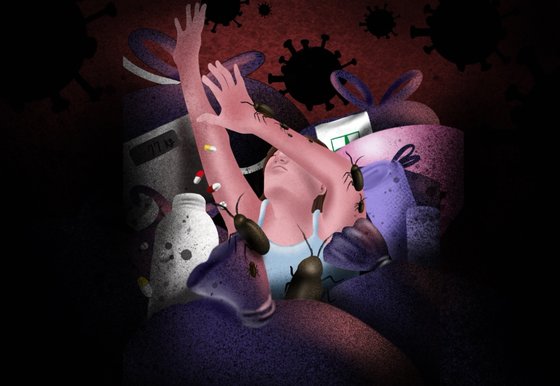
18세기에는 프랑스의 대표적인 궁전인 베르사유 궁전이 완공되면서 베르사유 일대를 중심으로 온갖 사치스러운 향수 문화가 발달하기 시작했다. 이는 프랑스 귀족들 뿐 아니라 모든 유럽의 청결과 위생의 무관심에서 비롯된 문화이기도 했다. 이에 대표적인 문서가 1705년 프랑스 팔라틴 공주의 편지에서 “나는 어쩔 수 없이 얼굴을 씻어야 했습니다. 먼지가 너무 많이 묻었거든요.” 라는 문구에서 나타난다. 영국의 역사학자 에드워드 기번(Edward Gibbon, 1737~1794)은 “로마는 목욕 때문에 멸망했다”고 말했다. 그만큼 고대 로마인의 목욕 사랑은 유별났기 때문이다. 목욕탕은 가운데 목욕 구역을 중심으로 집회실, 도서관, 강연장 등으로 구성된 거대한 하나의 공간이자 공동체들의 만남의 장소였고 당시 로마 사회 내부를 고찰할 수 있는 로마 사회 그 자체였다. 당시에 로마인들은 서로 만나면서 “어느 목욕탕에 다니느냐”고 묻는 것이 일상화였다. 반면 ‘영혼의 정결’을 중시한 기독교인들은 로마식 목욕이 쾌락적인 부분과 이교도의 산물이라 판단하여 목욕을 하지 않았다.
로마 시대까지 엄청나게 인기였던 목욕탕이 사라진 것은 14세기 중반 유럽의 3명 중 1명의 목숨을 거둬간 흑사병의 영향이 컸다. 당시 의사와 과학자들은 뜨거운 물에 들어가 모공이 열리면 역병이 쉽게 침투한다고 주장했기 때문이다. 그 이후 역병이 돌 때마다 죽기 싫으면 목욕탕과 목욕을 피하라는 말이 나왔고, 18세기 초까지 유럽인들은 목욕과 담을 쌓았다. 따라서 중세 유럽이나 중근세 시대의 유럽은 왕과 귀족, 농민 모두가 불결한 상태로 살았다. 기록에 의하면 1601년에 태어난 프랑스의 루이 13세는 7세가 되어서야 처음 목욕을 했고, 루이 14세는 지독한 입 냄새로 유명했다. 물기가 몸이 닿으면 병에 감염될 수 있다는 믿음으로 인해 사람들은 손을 씻는 경우를 제외하면 아예 물을 건드리지 않았고 얼굴은 마른 수건으로 닦았다. 목욕 대신에 선택한 것은 옷 갈아입는 것으로 당시 사람들은 흰색 아마포 옷이 땀을 흡수한다고 믿었다. 루이 14세가 펜싱을 하며 춤을 추고 군사훈련에 참가한 뒤 땀에 흠뻑 젖었을 때 씻는 대신 옷을 갈아입고 스스로 “깨끗하다”고 말한 이유도 여기에서 기인하고 있는 것이다.
루이 14세는 당시 최고의 향기를 풍기는 제왕이라고 불려졌다고 한다. 자신에게 풍기는 독한 입냄세는 아시아에서 가져온 향신료들을 통해 냄세를 봉쇄했다. 그리고 루이 15세 시대 프랑스 베르사유 궁전은 ‘향기의 궁전’으로 불릴 정도로 향수를 많이 사용하였다. 그렇게 향수를 도배한 이유는 목욕문화가 존재하지 않았던 당시 시대적인 상황으로 인해 그 악취를 상쇄하기 위해서이다. 이렇게 제작된 18세기 대표적인 향수는 오 드 코롱(Eau de Cologne)이다. 이탈리아인 장 폴 페미니스(Jean Paul Feminis)는 이탈리아 밀라노와 독일의 쾰른에 거주하면서, 레몬과 네롤리, 베르가못, 라벤더 등의 향료를 조합하여 ‘경탄할 물(Acqua meravigliosa)’이라는 이름을 붙였다. 그리고 19세기 초에는 페미니스의 후계자로 알려진 장 마리 파리나(Jean Marie Farina)는 이것을 오 드 코롱(Eau de Cologne)으로 이름을 바꿔 파리에서 제조했고 판매하기 시작했으며 이 제품은 프랑스 귀족 사회에서 큰 인기를 끌었다.
이 향수의 제조법을 1862년 파리의 로제 앤 갈렛(Roger & Gallet) 회사에서 입수하여 오 드 코롱의 창시자 이름인 ‘장 마리 파리나(Jean Marie Farina)’라는 향수로 만들어 출시하였다. 그러나 1789년 프랑스 대혁명이 발발하고 프랑스 부르봉 왕가를 연상시키는 향료와 향수 등의 사치품을 엄격히 금지함에 따라 19세기 중반까지 프랑스의 향수 산업은 쇠퇴의 길을 걷게 된다. 1804년 나폴레옹 보나파르트는 나폴레옹 1세 황제가 되면서 부인인 조세핀은 황후가 되었다. 나폴레옹은 프랑스 대혁명 아래 사치품으로 금지된 향료와 향수의 사용을 허용하였으며 향료 산업은 다시 부활하게 된다. 물론 황후 조세핀은 매우 사치스러운 여인으로 장미 재배에 관심이 많았으며, 관능적이고 섹시한 사향을 매우 사랑하였다 한다. 반면 나폴레옹은 청결을 중시했으며 상쾌한 감귤 종류의 향수인 ‘오 드 코롱(Eau de Cologne)’을 특히 좋아하여 한 달에 60병이나 사용했다고 한다.
나폴레옹의 두 번째 부인이자 오스트리아의 황녀인 마리 루이즈(Marie Louise, 1791~1847)는 바이올렛에 관심이 많았다. 1817년에 전쟁에서 패배한 나폴레옹과 결별한 이후, 이탈리아 밀라노 남동쪽의 파르마(Parma) 지방에 은거하며 바이올렛 향료 산업에 전력을 다하였다고 전해진다. 프랑스 제 2 제정 시대에 들어 나폴레옹 3세의 황후 유제니(Eugenie)는 프랑스의 향수산업을 발전시키는데 공헌하였다. 1828년 향수의 명문가인 겔랑(Guerlain) 가문을 창시한 피에르 프랑소와 파스칼 겔랑(Pierre François Pascal Guerlain)은 1850년 나폴레옹 3세의 황후 유제니를 위해 황제의 물이라는 뜻의 오 드 코롱 임페리얼(Eau de Cologne Impériale)을 창조하였다. 황후 유제니는 오 드 코롱 임페리얼(Eau de Cologne Impériale)의 고급스러운 향기에 만족해 피에르 겔랑을 황실의 조향사로 임명하게 된다. 이 향수는 남성과 여성 모두를 위한 것으로서, 베르가못, 레몬, 네롤리, 버베나, 오렌지블로섬, 로즈마리 등과 다양한 종류의 꽃향이 조합된 향수이다.
1921년 패션과 향수의 만남으로 인해 향수 시장은 최고의; 전성기를 맞게 된다. 이는 가브리엘 보뇌르 코코 샤넬(Gabrielle Bonheur "Coco" Chanel)과 조향사 어네스트보우(ERNEST BEAUX)에 의해 오늘날 최고급 향수 중 하나인 샤넬 NO.5가 탄생된다. 러시아 출신이자 모스크바의 화학자인 어네스트 보우(Ernest Beaux)는 패션의 불필요한 요소를 없앤 "Less is More" 라는 샤넬 만의 독특한 패션스타일과 실루엣 칼라 등을 합성 향료 수종의 알데하이드(Aldehyde)를 조합하여 지금까지 전무했던 새로운 향수를 만들었던 것이다. 샤넬 NO.5의 탄생 이후 향수 산업은 패션으로 표현할 수 없는 그 무엇을 보여주는데 중요한 역할을 하게 된다. 비로소 향수 산업은 패션 디자이너들이 만들어낸 향수와 유명인의 이름을 차용한 이른바 향수 브랜드 시대를 열었다. 대표적인 인물로는 샤넬을 비롯해 랑방, 장빠뚜, 피에르가르뎅, 크리스챤디올, 지방시, 이브생로랑 등이 있다. lukybaby7@gmail.com
*필자/ 정길선.
노바토포스 회원, 역사학자, 고고인류학자, 칼럼니스트, 러시아 과학아카데미 유라시아 고고인류학연구소 연구교수.
*아래는 위 기사를 '구글 번역'으로 번역한 영문 기사의 [전문]입니다. '구글번역'은 이해도 높이기를 위해 노력하고 있습니다. 영문 번역에 오류가 있을 수 있음을 전제로 합니다.<*The following is [the full text] of the English article translated by 'Google Translate'. 'Google Translate' is working hard to improve understanding. It is assumed that there may be errors in the English translation.>
Roman bathing culture disappears, France replaces bathing with perfume
- Jeong Gil-seon, columnist
In the 18th century, when the Palace of Versailles, the representative palace of France, was completed, all kinds of luxurious perfume culture began to develop around Versailles. This was a culture that arose not only from the French aristocracy but also from the indifference to cleanliness and hygiene in all of Europe. A representative document of this appears in a letter from the Princess Palatine of France in 1705, which says, “I had to wash my face because it was so dusty.” British historian Edward Gibbon (1737-1794) said, “Rome fell because of bathing.” This is because the ancient Romans loved bathing so much. The bathhouse was a huge space consisting of a central bathing area, an assembly room, a library, a lecture hall, etc., and a meeting place for communities, and it was the Roman society itself where one could examine the inside of Roman society at the time. At the time, it was common for Romans to ask each other, “Which bathhouse do you go to?” when meeting each other. On the other hand, Christians who valued ‘purification of the soul’ did not bathe in Roman baths because they judged them to be hedonistic and a product of paganism.
The disappearance of baths, which had been extremely popular until the Roman era, was largely due to the Black Death, which killed one in three people in Europe in the mid-14th century. At the time, doctors and scientists argued that if you enter hot water and your pores open, the plague can easily penetrate. After that, whenever a plague broke out, people were advised to avoid baths and baths if they didn’t want to die, and until the early 18th century, Europeans built baths and walls. As a result, kings, nobles, and peasants in medieval and early modern Europe lived in unclean conditions. According to records, Louis XIII of France, who was born in 1601, took his first bath when he was seven years old, and Louis XIV was famous for his terrible breath. Due to the belief that people could become infected if they touched water, people did not touch water at all except to wash their hands, and they wiped their faces with dry towels. Instead of bathing, they chose to change clothes, as people at the time believed that white linen clothes would absorb sweat. This is also why Louis XIV, drenched in sweat after fencing, dancing, and participating in military training, changed clothes instead of washing and said that he was “clean.” Louis XIV was said to have been called the emperor with the best scent at the time. He blocked his strong breath with spices imported from Asia. And during the reign of Louis XV, the Palace of Versailles in France was called the “Palace of Scents” because it used so much perfume. The reason for using so much perfume was to offset the stench of the time when bathing culture did not exist. The representative perfume produced in this way in the 18th century is Eau de Cologne. Italian Jean Paul Feminis, who lived in Milan, Italy and Cologne, Germany, combined lemon, neroli, bergamot, and lavender and named it “Acqua meravigliosa.” Then, in the early 19th century, Jean Marie Farina, known as Feminis’ successor, changed the name to Eau de Cologne and began manufacturing and selling it in Paris, where it became very popular among the French aristocracy.
The recipe for this perfume was acquired by the Parisian company Roger & Gallet in 1862, and it was released as a perfume called “Jean Marie Farina,” the name of the founder of Eau de Cologne. However, with the outbreak of the French Revolution in 1789 and the strict prohibition of luxury items such as fragrances and perfumes reminiscent of the French Bourbon dynasty, the French perfume industry began to decline until the mid-19th century. In 1804, Napoleon Bonaparte became Emperor Napoleon I, and his wife Josephine became Empress. Napoleon allowed the use of fragrances and perfumes, which had been banned as luxuries under the French Revolution, and the fragrance industry was revived. Of course, Empress Josephine was a very extravagant woman, and was very interested in rose cultivation, and it is said that she loved sensual and sexy musk. On the other hand, Napoleon valued cleanliness and especially loved ‘Eau de Cologne’, a refreshing citrus-type perfume, and it is said that he used up to 60 bottles a month.
Napoleon’s second wife, Marie Louise of Austria (1791-1847), was very interested in violets. After breaking up with Napoleon, who was defeated in the war in 1817, it is said that he devoted all his energy to the violet fragrance industry while living in seclusion in the Parma region, southeast of Milan, Italy. During the Second Empire of France, Empress Eugenie, wife of Napoleon III, contributed to the development of the French perfume industry. Pierre François Pascal Guerlain, who founded the prestigious perfume family Guerlain in 1828, created Eau de Cologne Impériale, meaning “emperor’s water,” for Empress Eugenie, wife of Napoleon III, in 1850. Empress Eugenie was satisfied with the luxurious scent of Eau de Cologne Impériale and appointed Pierre Guerlain as the imperial perfumer. This perfume is for both men and women, and is a combination of various floral scents such as bergamot, lemon, neroli, verbena, orange blossom, and rosemary.
In 1921, the perfume market reached its peak due to the meeting of fashion and perfume. This is when one of the most luxurious perfumes of today, Chanel No. 5, was created by Gabrielle Bonheur "Coco" Chanel and perfumer Ernest Beaux. Ernest Beaux, a Russian chemist from Moscow, combined Chanel's unique fashion style of "Less is More", which eliminated unnecessary elements of fashion, and silhouette colors, with several types of synthetic fragrance aldehydes to create a new perfume that had never been seen before. After the birth of Chanel No. 5, the perfume industry played an important role in showing something that could not be expressed through fashion. The perfume industry finally opened the era of so-called perfume brands, which were created by fashion designers and borrowed the names of celebrities. Representative figures include Chanel, Lanvin, Jean Patou, Pierre Cardin, Christian Dior, Givenchy, and Yves Saint Laurent. lukybaby7@gmail.com
*Author/ Jeong Gil-seon.
Novatopos member, historian, paleoanthropologist, columnist, and research professor at the Institute of Eurasian Paleoanthropology, Russian Academy of Sciences.


